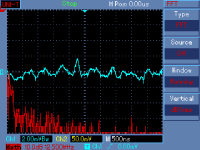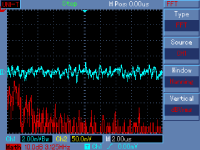That's an outcome I didn't expect - this is surprising! 🙂
What could be the reason more people chose green? Being used to how a pre-amp behaves? What changes in the audio file would trigger this in our brain? 🙂
Anyway - I think a test like this should be repeated with the proper testing standards. It would make nice validation of this test if the results are similar.
But in any case: thank you for putting effort into making this happen 🙂
What could be the reason more people chose green? Being used to how a pre-amp behaves? What changes in the audio file would trigger this in our brain? 🙂
Anyway - I think a test like this should be repeated with the proper testing standards. It would make nice validation of this test if the results are similar.
But in any case: thank you for putting effort into making this happen 🙂
I'm just wading through all the replies since last night.
Was going to ask what gain are we running the OPA at but I've found it. Only half awake 😀
When I listened to the files at first I thought "Blue," but on repeated listening it was Green that got my attention every time. It was the one I could relax to and pick out the musical line better. Toward the end of each clip the soundstage seems to noticeably open out and it was Green that captured that better (to me 🙂) I also felt there was a little "hardness" on some of the vocals on Blue.
A very interesting result indeed.
Was going to ask what gain are we running the OPA at but I've found it. Only half awake 😀
When I listened to the files at first I thought "Blue," but on repeated listening it was Green that got my attention every time. It was the one I could relax to and pick out the musical line better. Toward the end of each clip the soundstage seems to noticeably open out and it was Green that captured that better (to me 🙂) I also felt there was a little "hardness" on some of the vocals on Blue.
A very interesting result indeed.
ROTFL ... hope I got the 5LA correct! 😀
Thanks to PMA & Mooly for this great listening test which I still hope they will repeat with ABC ... perhaps sneaking in another OPA instead of just green & blue ... Gotta keep da listeners guessing until they give up guessing and just trust their ears 🙂
Got a list of comments from the various listeners who thought they heard a difference? No need to name names cos gotta persuade them to do the repeat test.
There's an extra RC filter in the green chain and an extra coupling capacitor. Although I couldn't hear a difference and voted "can't decide" I'd be quite prepared to believe that someone else could. Particularly if it was a live listening test rather than just a recording and replay on yet another device.
Also, it's not obvious from the circuit which one ought to sound better. DAC's can sometimes benefit from a different filter.
I think all poll choices are valid here.
What could be the reason more people chose green? Being used to how a pre-amp behaves? What changes in the audio file would trigger this in our brain? 🙂
Frankly, I like this preamp and I usually prefer it to 'direct path'. I was curious what people would say. We have the impressions of participants collected. Interestingly enough, many of the impressions and sound descriptions are similar to those I would use.
It is extremely difficult to hear the difference with headphones (to me).
ROTFL ... hope I got the 5LA correct! 😀
Thanks to PMA & Mooly for this great listening test which I still hope they will repeat with ABC ... perhaps sneaking in another OPA instead of just green & blue ... Gotta keep da listeners guessing until they give up guessing and just trust their ears 🙂
Got a list of comments from the various listeners who thought they heard a difference? No need to name names cos gotta persuade them to do the repeat test.
Trusting your ears is what its all about, and that applies in all aspects of the audio chain.
There's an extra RC filter in the green chain
3.44 MHz low pass. It is good to use maths 😉
3.44 MHz low pass. It is good to use maths 😉
Yeah, that would be below the master clock frequency of the DAC.
Most of the rubbish the DAC puts out is at very high frequency.
Frankly, I like this preamp and I usually prefer it to 'direct path'. I was curious what people would say. We have the impressions of participants collected. Interestingly enough, many of the impressions and sound descriptions are similar to those I would use.
It is extremely difficult to hear the difference with headphones (to me).
I think a test like this adds weight to the argument that audio components and topologies do have a certain "sound" or quality to them and that fact can/could/should be used to go on to produce designs of outstanding sonics.
How can an opamp and buffer sound "better" than direct ? I'm amazed a test like these reveals a difference (741 vs xxx maybe) but these are so close technically... and yet we/you... the listener 😛 well the votes seem to show that you know what you prefer.
A brilliant test Pavel.
Most of the rubbish the DAC puts out is at very high frequency.
That's correct! But I have even this documented. I agree that it may indicate to something, especially for the reason that preamp itself is very fast and the OPA used has very good EMIRR.
Pavel, this reminds me of your Dispre 2 preamp. So absolutely transparent that I could not detect a change whether the source was connected directly to the amp or not.
Overall a great test!
Overall a great test!
Trusting your ears is what its all about, and that applies in all aspects of the audio chain.
No, there are critical knowledge that are still difficult for some people to understand. I have stated many times since many years ago but it seems only a few can get it

But actually, there is not so much of HF mess at the output of this DAC implementation.
I'm not sure if I'm reading your scope correctly but if that FFT has 0dB at the top and is 10dB per major division it puts the DAC cruft down between -60dB to -80dB, well within the range that the ADC could pick it up.
You read it well, but FFT is enlarged and Y shifted and the top is above visible screen, though the marker says it is on the top - it cannot travel higher.
Anyway, the green almost does not change the HF spectrum. There are many paths for HF to leak, if it is not strictly UHF design and case.
Anyway, the green almost does not change the HF spectrum. There are many paths for HF to leak, if it is not strictly UHF design and case.
What could be the reason more people chose green?
More people chose blue or couldn't detect a difference than chose green 🙂 All of the individual choices are in a minority.
Richard, thanks. Results and HW already revealed 😉. The non-direct path 'won'.
Yes, same logic why most people have terrible systems 😉
More people chose blue or couldn't detect a difference than chose green 🙂 All of the individual choices are in a minority.
Yes, there is no true 'winner'. That's how it should be, in this case.
Last edited:
Jay, I'm interested that you use a similar technique to me in how you go about evaluating - "listening without listening". Perhaps of curiousity to some, these were the comments I sent to Mooly 4 days ago:
The slow fading of quality in Blue for the duration of the clip was noted by some, though expressed in different ways - this is a classic distortion artifact in digital derived sound one has to constantly deal with, one that I've wrestled with for 30 years ... !!Fairly straightforward, only needed to use Nero player - no visuals to distract ! Blue is quite superior, green sounds if it has has been processed in some way to remove sparkle and depth, though nominally the vocals sound slightly smoother - the latter has more a classic "hifi" sound.
There seems to be another subtlety, the quality of blue starts well, but degrades somewhat through the length of it, develops an edge by the end of the clip - this is a behaviour I've noted quite often with digital replay.
You read it well, but FFT is enlarged and Y shifted and the top is above visible screen, though the marker says it is on the top - it cannot travel higher.
Anyway, the green almost does not change the HF spectrum. There are many paths for HF to leak, if it is not strictly UHF design and case.
You could diff green and blue with the original and see if the green diff has less noise than the blue diff perhaps.
If you speak about HF, the method is, unfortunately, unreliable. It is affected by everything else like PC, PC interference to mains distribution etc, and it varies with time and momentary conditions. Though in audio band we have quite trusted results here, for HF we have only indications.
- Status
- Not open for further replies.
- Home
- General Interest
- Everything Else
- Ultimate listening test ... test your ears and audio chain

